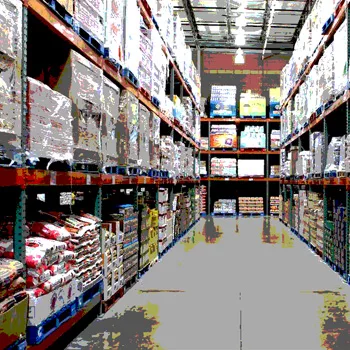The FSMA Foreign Supplier Verification Program: What U.S. Importers Need to Know

As food safety and quality professionals know, the U.S. Food and Drug Administration (FDA) continues to make changes that will have a significant impact on food importers and suppliers.
The next big hurdle will be the requirement of Foreign Supplier Verification Programs (FSVP), part of FDA’s Food Safety Modernization Act (FSMA). The FSVP will require U.S. food importers to conduct supplier verification exercises to demonstrate the safety of imported food, or be held liable for issues and fees arising from nonverified suppliers.
Although the latest version of the proposed FSVP is in the review process, U.S. food importers should understand it and take steps to prepare now.
Fifteen percent of the U.S. food supply is imported. In addition, a growing amount of the U.S. population has health issues such as allergies or food sensitivities that make them more susceptible to the dangers of unsafe food. These are two of the many factors causing the government to take action to ensure the health and safety of the food supply by minimizing risk and stopping problems before they happen. The FSVP is the next step in the new laws the U.S. government is working on with governments around the world to standardize food safety.
Under FSMA, all facilities that manufacture, hold or pack food must renew their FDA Food Facility Registration number every even numbered year between October 1 and December 31. Failure to register by the deadline will invalidate the Food Facility Registration number preventing importation into the US.
Other portions of the FSMA already in place include:
• Mandatory recall authority: FDA can now mandate recalls of a product if the facility does not do it voluntarily.
• A lower threshold for administrative retention: FDA now has the legal authority to retain goods with only “a reason to believe” they are noncompliant. The previous regulation required FDA to have “credible evidence” that the food or food product represented a threat to public health. Administrative retention allows FDA to detain food shipments for a limited period of time, during which the agency undertakes legal action to formally seize the product.
Looking for quick answers on food safety topics?
Try Ask FSM, our new smart AI search tool.
Ask FSM →
• Increased enforcement and scrutiny of food imports: Expect an increase in inspection of foreign food facilities, including the production and importation of food from foreign facilities. FDA is also working closely with U.S. Customs and Border Protection to identify smuggled or misrepresented food and food products.
• New fees: These include fees for the inspection of foreign facilities and fees to reinspect both domestic and foreign facilities after violations are identified and corrections made.
Understanding the Proposed Food Safety Verification Program
While we don’t know specifically what the final version of the FSVP will include, based on the proposed version, we know that for the first time, businesses that import food from foreign suppliers will be responsible for the safety of the food they bring into the market. This means the importers, defined as the U.S. owner of the food at its time of entry to the U.S., must have a prevention program in place to meet the safety standards of specific foods.
Once the FSVP is final, importers will have 18 months to become compliant.
The FSVP will essentially require importers to become their own risk managers and identify the types of hazards associated with their foods. It will be the responsibility of the importer to write their own plans—for each type of food item—to show they are accountable and monitoring their suppliers. If inspected by FDA, businesses will be required to prove compliance by showing documentation that they have met the requirements of the FSVP.
Elements of a safety plan would need to include:
• A Hazard Analysis: Under the proposed FSVP, importers must develop a Hazard Analysis that requires an importer to conduct a compliance status review of each food to be imported and each foreign supplier to assess whether the food or supplier has been in violation of FDA regulations. The evaluation of risks would require the importers to consider factors such as the nature of hazards in food, the entity that will be applying hazard controls (such as the foreign supplier or the foreign supplier’s ingredient supplier), the foreign supplier’s procedures related to food safety and applicable U.S. food safety regulations, and information regarding the foreign supplier’s compliance with those regulations already in place.
• Supplier verification: Importers would be required to maintain a written list of foreign suppliers, and establish and follow procedures for conducting verification activities. Under the proposal, importers would have the flexibility to determine appropriate verification measures based on food and supplier risks. For example, when there is reason to believe that a hazard will cause serious injuries or deaths, an importer must perform an annual onsite audit of the supplier. Importers would be allowed to use a different approach, possibly including less frequent auditing, only if they can establish it will provide adequate assurance that the hazard is controlled.
• Corrective actions: Importers would be required to review complaints they receive concerning the foods they import, investigate the cause of adulteration or misbranding in some circumstances, take appropriate corrective actions and revise their FSVP when it appears inadequate.
• Periodic reassessment of the FSVP: Importers would need to reassess an FSVP within 3 years.
• Importer verification: Importers would be required to obtain a company identification number to be provided to U.S. Customs and Border Protection when the importer files for entry of a food into the U.S. Importers should use a Data Universal Number and Bradstreet’s Data Universal Numbering System for company identification.
• Record keeping: Importers would be required to keep certain records, including a Hazard Snalysis, foreign supplier verification activities, investigations, corrective actions and FSVP reassessments.
Next Steps: Be Proactive
While developing a FSVP for each food a business imports is a daunting and a time-consuming task, if importers take steps now to prepare, they will find it easier once the final FSVP is announced. It’s important to remember good record keeping is a critical element of all aspects of FSMA, so businesses should make sure they have record keeping in place.
Additional steps importers should take now include:
• Assessing safety plans they may already have established
• Assessing the safety risk of each food the business imports
• Checking to see if their current foreign suppliers are on the U.S. FDA Buyer Alert
• Creating a recall plan and outlining how each product is manufactured or managed
Working with a customs broker who continuously keeps abreast of food safety regulations can educate importers on new proposals and regulations so they can work proactively to meet the challenges and to ensure compliance.
Kathie (Polychronis) Raymond is manager, FDA compliance, with Livingston International.
>
Author(s): Kathie Raymond








